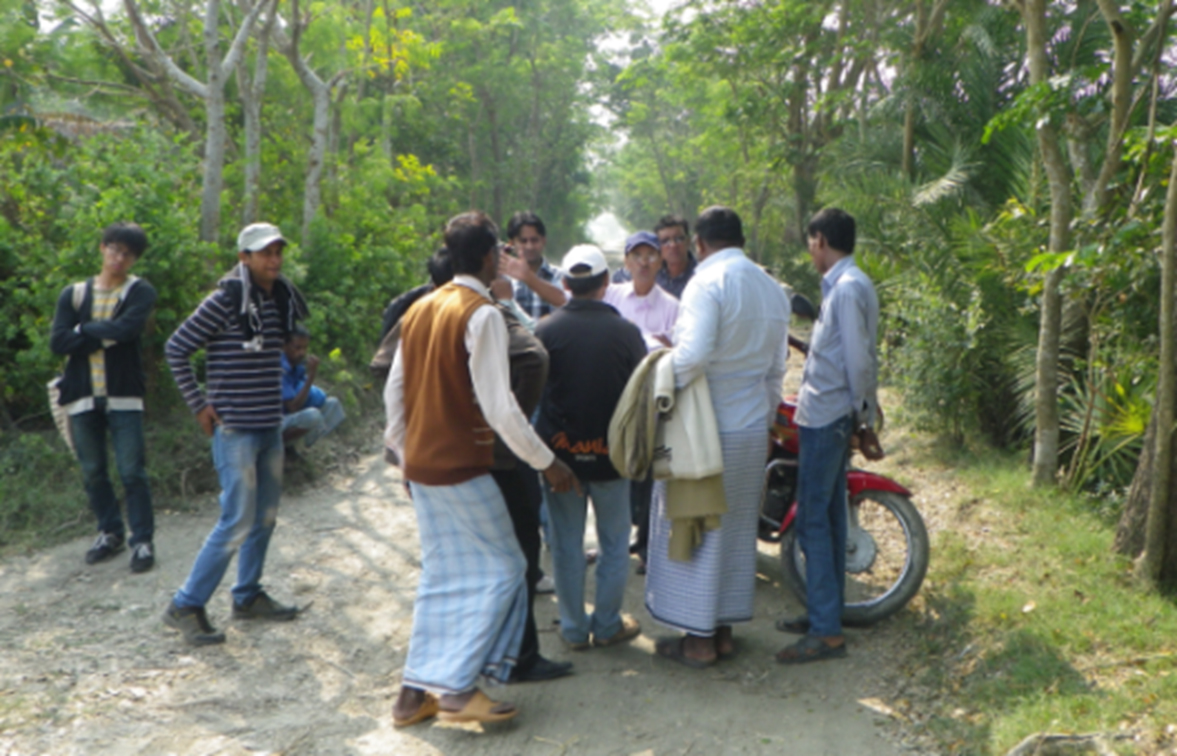
A. 巨大水災害 コース
Mitigation Strategy against Major Flood Disaster

Mitigation Strategy against Major Flood Disaster
東日本大震災では、巨大な津波が社会の根幹をも揺るがす被害をもたらした。気候変動に伴う集中豪雨などの極端現象の激化や、南海ト ラフにおける巨大津波なども想定される中、巨大な水災害に対する従来の封じ込め型治水対策には限界があることを認識し、そのうえで総合的で効果的な水害に強い町づくりを具現化することのできる人材の養成が必要不可欠である。またスマトラ沖地震津波災害や、サイクロン・シドルや台風ハイアンに伴う高潮災害など,巨大水災害に対する 減災技術の確立は、我が国だけでなく、低平地に人口や資産が集中するアジア諸国においても喫緊の課題である。減災・復興実践学教育プ ログラム巨大水災害コースでは、水害減災設計学、耐水建築学、水害 減災都市システム学の三分野を柱とする新たな減災学理を構築し、大学院レベルの実践的研究と社会基盤学科、建築学科、都市工学科の三専攻横断型の講義・演習を通じて、巨大水災害の軽減に資する教育・ 研究を展開する。
Catastrophic disaster caused by the 2011 Tohoku Earthquake Tsunami highlighted the importance of integrated disaster mitigation strategies against such severe flooding events. Besides the inundation risk of future mega tsunami, such as the one threatened by Nankai Trough quake, climate change may also intensify the frequency and magnitude of torrential rainfall or super typhoons and may increase the risk of such extreme flooding events. Especially against such extreme flooding events, the present flood prevention works, such as levees and coastal dykes, may no longer be effective counter measures and thus development of integrated and feasible disaster mitigation strategies should be one of most urgent and essential tasks. Such integrated mitigation measures against intensive flooding events should also be important in other Asian countries who have near-shore low-land area with dense population and industries and have suffered various severe flooding disasters such as severe inundation due to the 2004 Indian Ocean Tsunami, storm surges due to Cyclone Sidr and Typhoon Haiyan.
As one of two parallel courses of this tans-disciplinary education program, Disaster Mitigation Strategy against Major Flood Disaster (Course A) aims to yield engineers who are capable of development of such integrated mitigation strategies especially against major flooding disasters based on various special disciplines offered by departments of Civil Engineering, Architecture and Urban Engineering.
本コースの修了要件は,①修士あるいは博士論文研究と②別表に示した講義群から、必修科目(2単位) およびコア科目(4単位以上)を含む合計12単位以上を取得することである。修士あるいは博士論文研究は 修了時に発表会を実施し、本教育プログラムの認定委員会による審査を経た後、修了が認定される。講義群は社会基盤学、建築学、都市工学の三専攻それぞれの学術領域における専門性の高い講義を含 んでおり、履修者には自身の専門領域に加え、周辺の学術領域の知見も深めることを期待する。唯一の必修科目である「巨大水災害軽減学演習」では、具体的な対象地域を設定して大規模水災害に対する現在の被害想定や防災・減災対策を調査・分析し、そのうえでより効果的な対策を検討し提案する。
This course requires students to receive at least 12 credits from any of specified subjects listed in the Table, including i) Seminar on Flood Disaster Mitigation(2 credits) and ii) two core subjects (4 credits). After the defense of your master/doctoral thesis, the program asks you to repeat your presentation for the benefit of the students registered on the program. Certificates will be issued after the presentations. This course expects students not only to deepen their specialty but also to widen their view and knowledge related to disaster mitigation strategies throughout the course works in various special fields offered by three departments. Seminar on Flood Disaster Mitigation is the single compulsory subject of the course and aims to enhance interactions among students and faculties with different specialties through the group work to develop and propose practical and integrated disaster mitigation measures at certain specific case sites. This seminar offers unique opportunities for graduate students to exchange their ideas and knowledge from different specialties and disciplines.